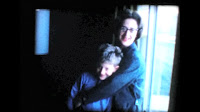 The terrorist attacks in Paris, on November 13, were a cruel reminder how so few can cause so much harm. The ripple effects, no doubt, were intended to send a message to the greater, global population – to keep people scared and off balance.
The terrorist attacks in Paris, on November 13, were a cruel reminder how so few can cause so much harm. The ripple effects, no doubt, were intended to send a message to the greater, global population – to keep people scared and off balance.Just two weeks later, my husband and I would be flying overseas. To London. The trip had been planned since spring. There was no way we weren’t getting on the plane. Still, as the caution on global travel intensified, people asked – my mother, my chiropractor, my running buddy – whether we would cancel our trip.
We promised to be careful, but we were going to stick to our plans. And so we revisited the city where, decades earlier, we had honeymooned. Even back then there had been safety alerts in airports and public areas, both in London and in U.S. cities, about bomb threats and the need to report any unattended packages. Apparently “the good old days” weren’t as innocent and idyllic as we might like to remember them.
While we were away, more terrorist attacks did occur, not in London, but in America. First it was news of a gunman storming the Planned Parenthood clinic in Colorado Springs. Then coverage of the San Bernardino attack, which came just two days before we were to leave London. Two days after we arrived home, there was a knife attack deemed a "terrorist incident" in the London Underground, which we had used extensively.
I don’t feel we were lucky to be out of harm’s way during our travels. It's hard to know when you’re going to be in the wrong place at the wrong time. I just don’t want to live my life in fear or in reaction to possible negative outcomes.
So go away. Make your plans. Take whatever precautions necessary to be more comfortable while away from home. Check the State Department website for specific travel alerts and warnings, and sign up for its Smart Traveler Enrollment Program to make it easier for U.S. embassies and consulates to contact you and your loved ones in case of emergency.
Then pack your bag and go see the world. You’ll find it’s bigger on the outside. It's real HD – even better than it looks on the Web. And it's so much more fun when you experience it in person.



























